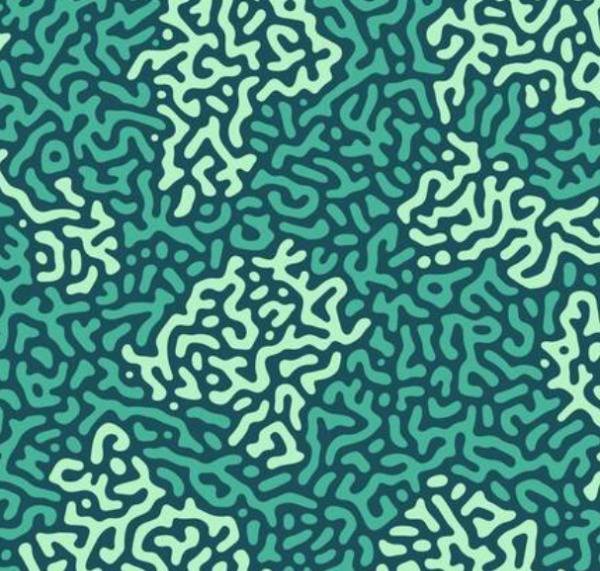
This article is a preview from the Autumn 2016 edition of New Humanist. You can find out more and subscribe here.
In 1900, 21-year-old Albert Einstein was an unemployed graduate with a teaching diploma in mathematics and physics from a polytechnic university. Einstein struggled to get a job for two years until his friend’s dad pulled enough strings to get him a job as a technical assistant in a patent office.
Einstein took advantage of his technical skills and began formulating novel ideas in physics. In 1905, his “miracle year”, he was awarded a PhD by the University of Zurich for his dissertation “A New Determination of Molecular Dimensions”. The same year, he wrote four ground-breaking papers, including one on special relativity which proposed that distance and time are not absolute.
As word of Einstein’s papers got around, he climbed the academic hierarchy (he quit his clerking job in 1909). On 25 November 1915, Einstein presented his theory of general relativity to the Prussian Academy of Sciences in Berlin – he’d been working on it since 1907. In Einstein’s theory, space and time are combined into a single entity which he called “space-time”. Matter and energy are the same thing, too.
Einstein made a clear connection between gravity and the curvature of space-time. Objects distort the fabric of space-time and the bigger that object is, the greater the effect. We observe this distortion as gravity. Freely falling objects – satellites or beams of light – follow the most direct path in this curved space-time. From there, Einstein realised that space-time could ripple if a massive object moved; much as a moving boat produces ripples in the water. All Einstein had to do was work out the maths.
In his 1916 and 1918 papers respectively titled “Approximate integration of the field equations of gravitation” and “About gravitational waves”, Einstein outlined the properties of gravitational waves. He linked the motion in space-time to a wave-like equation. High-mass objects, such as a binary black hole (two black holes that orbit each other), stir space-time by their motion, and gravitational energy ripples throughout the universe. From the wave equation, Einstein postulated that gravitational waves travel at the speed of light. Previously, physicists had seen space-time as a rigid framework. In 1919, Einstein’s theory was confirmed when light rays from distant stars were seen being bent by the space-time curvature around the Sun. The world came to know his name.
Unfortunately, Einstein died in 1955 before he could prove the existence of gravitational waves. However, generations of physicists were determined to complete his work and unravel the mysteries of the universe. Little did they know it would take a hundred years.
* * *
In 1974, Joseph Taylor Jr and Russell Hulse discovered a binary pulsar system; a radiating neutron star, or pulsar, orbiting another neutron star. In 1982, Taylor and Joel Weisberg found that the orbit of the pulsar was gradually shrinking over time because of its energy loss in the form of gravitational waves. In 1993, Taylor and Hulse won the Nobel Prize in Physics “for the discovery of a new type of pulsar, a discovery that has opened up new possibilities for the study of gravitation”.
Work to detect gravitational waves began in the 1960s with physicist Joseph Weber of the University of Maryland. He developed the first gravitational wave detectors, “Weber bars”. A Weber bar is a cylindrical aluminium bar about 2 metres long and 0.5 metres in diameter, isolated as well as possible from external vibrations.
Weber bars detect gravitational waves through a harmonic phenomenon called “sympathetic resonance”. This is when an object’s vibration is caused by an external vibration. In the case of a Weber bar, a gravitational wave of 1660 Hz will cause the bar to ring like a bell. Despite the elasticity of space-time, it is still extremely stiff. Trying to listen to the ringing of a Weber bar from an event that happened a billion light years away is ambitious, to say the least. So, Weber mounted electricity-producing crystals around the bar so it produced an electric voltage when a bar rang.
In 1969 and again in 1970 Weber claimed to have detected gravitational waves. However, other theorists became sceptical when Weber’s results couldn’t be substantiated. “Either Joe Weber was wrong,” commented one theorist, “or the whole universe is cockeyed.”
Weber made more claims over the years but by the late 1970s everyone but Weber agreed that his detections were, at best, dubious. However, he had created a new interest in gravitational waves. Next came the invention of more sensitive detectors, including “interferometric detectors” that use the interference of light to measure gravitational waves. Improvements made to interferometers over the years led to the development of laser interferometers. The first set of laser interferometers were completed in the early 2000s, including the Laser Interferometer Gravitational-wave Observatory (LIGO) in the United States. Between 2005 and 2011, several of these interferometers worked together to detect gravitational waves – but failed. In 2015, LIGO detectors resumed work as Advanced LIGO, detectors with unprecedented sensitivity.
Advanced LIGO worked. On 14 September 2015, twin LIGO detectors located in Livingston, Louisiana, and Hanford, Washington, both measured the ripples in the fabric of space-time from a binary black hole merger. They had detected a gravitational wave and dubbed it GW150914. LIGO announced their discovery on 11 February 2016. GW150914 was the first success of LIGO in directly detecting a gravitational wave. It had taken 44 years of LIGO developments and the entire careers of many talented physicists get to this point.
* * *
So how did it all happen? Well, an interferometer like LIGO consists of two “arms” about 4km long at right angles to each other. A laser beam is shone and reflected by suspended mirrors at each end of the arm. When a gravitational wave comes along, the stretching and squeezing of space will cause the arms to alternate in shrinking and lengthening. So the beams take different times to travel through the arms. We call this an “interference pattern”, hence the name “interferometers”.
The difference in length between the arms is proportional to the strength of the gravitational wave, and that number is ridiculously small – something like 1/10,000th of the width of a proton. But LIGO interferometers are so sensitive that they can measure numbers that tiny.
To detect GW150914, the LIGO team needed not only incredibly sensitive detectors, but a way to detect gravitational wave signals from the background noise. Having two twin detectors in different locations reaffirmed the detection of a gravitational wave. GW150914 was compared with the predictions of the best-matching waveform, based on general relativity, during the events of a binary black hole merging. And the match was almost perfect.
The team could then determine the physical characteristics of the black hole merger that caused GW150914, including the masses of the two black holes – 36 times and 29 times the mass of the Sun, respectively; whether it rotates – it does; the gravitational-wave power radiated by GW150914 – about ten times the combined luminosity of every star and galaxy in the observable universe; and how far away from us the event was – 1.3 billion light years, a long time ago in a galaxy far, far away.
Over the next few years, gravitational waves will help scientists map the statistics of binary black hole mergers from a distance of more than 3 billion light years, allowing black hole population studies. “The early stages of life in our universe – the first seconds, years, millennia – are hard to probe directly, so it would be great to have another tool that helps us understand what went on in the very hot, very dense soup of the early universe. And gravitational waves could provide such an alternative probe,” Dr Ilya Mandel of Birmingham University tells me. “If we are lucky, some day we could observe gravitational waves from the very early universe much earlier than any electromagnetic radiation we could hope to see.”
The cosmic microwave background radiation is a relic of our former universe, emitted when it was around 300,000 years old. It is the oldest light we can hope to see but can only indirectly tell us what went on during those 300,000 years. Gravitational waves from the first second of life in the universe are potentially detectable. “We may discover something unexpected!” says Dr Mandel.
Professor James Hough of Glasgow University tells me that this new technology will help us understand how the universe expanded, without so much reliance on the mathematical models currently used. “Gravitational waves may also help to provide a new handle on understanding the existence of dark energy,” he says, referring to the theoretical form of energy thought to cause a more rapid expansion.
Dr Mandel also explains how gravitational waves can be used: “A pair of merging black holes are the remnants of two very massive stars – and observing them can tell us something about how those two stars were born, lived and evolved, helping us understand some deep questions in modern astrophysics.”
On 15 June 2016, the LIGO and Virgo confirmed a second gravitational wave event, dubbed GW151226, in the data from the Advanced LIGO detectors. The event took place on 26 December and is nicknamed “the Boxing Day event”. A third detection made in October 2015 is awaiting confirmation. With these discoveries, physicists can start to estimate the rate at which black holes merge in the universe, based not on theory but through real-life observations. Now we know these detectors can work, physicists can train them on the skies at ever greater sensitivity and learn a great deal from the gravitational waves they find.
From Galileo’s homemade telescope to Einstein’s dingy office to the discovery of GW150914, our understanding has changed for ever. As Dr Edward Daw of Sheffield University says: “We are really only just getting started.”

